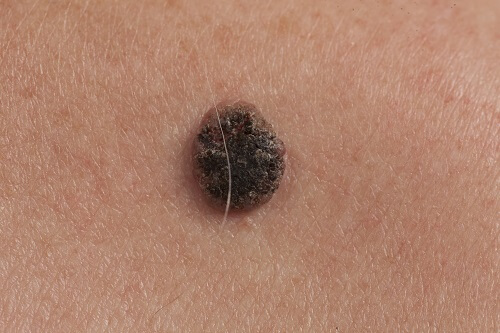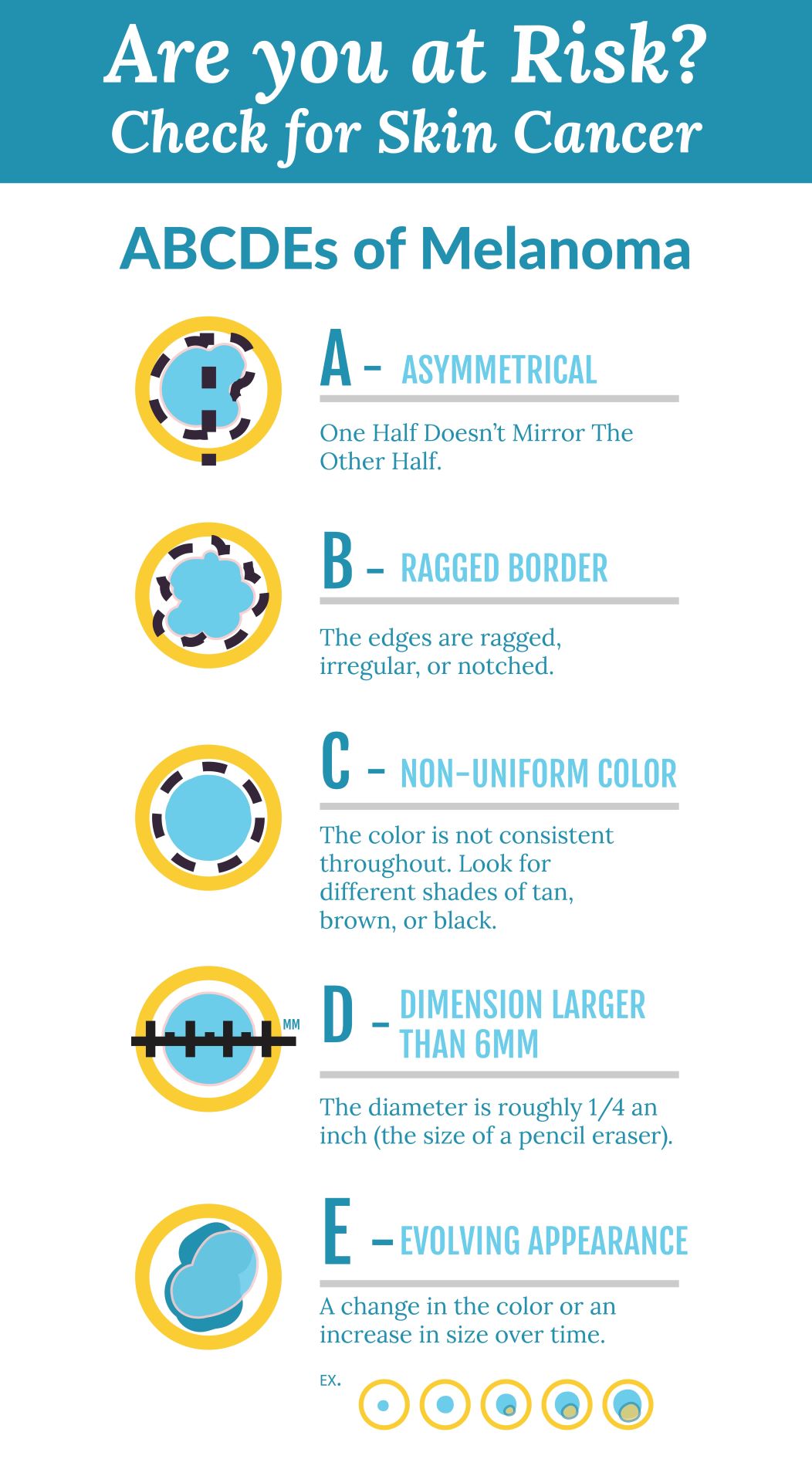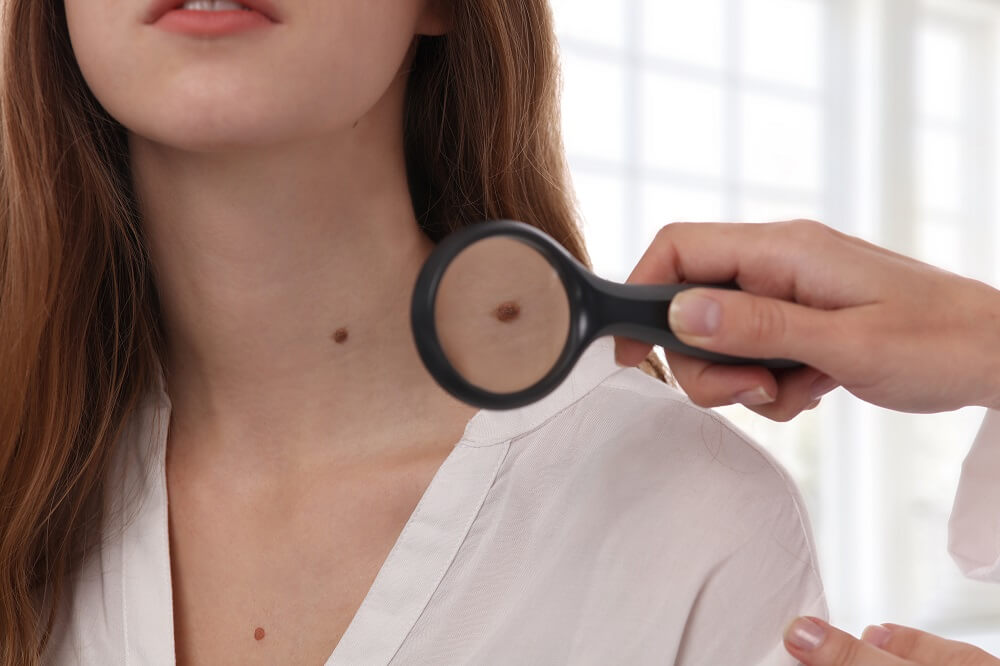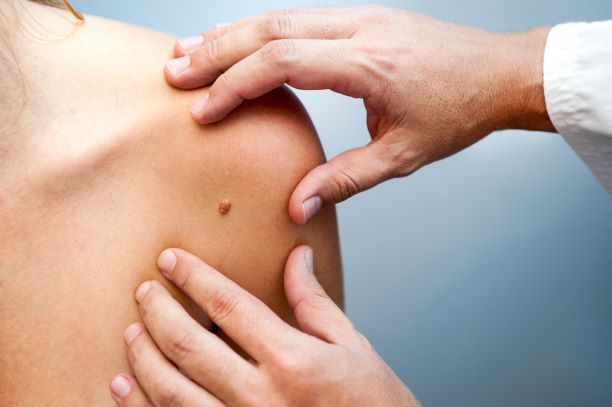May is Skin Cancer Awareness Month
May is Skin Cancer Awareness Month, and the skin care experts of U.S. Dermatology Partners are committed to helping people learn more about the risk for skin cancer, the warning signs to be aware of, and how to protect your skin and prevent skin cancer from ever developing. All month long we’ll be sharing information with you about many aspects of skin cancer. In this first post, we want to start off with a broad overview of the condition, including a careful walkthrough of self-exams. Remember whether it’s skin cancer awareness month or any other time of the year, the skin care team at U.S. Dermatology Partners is here to help you with diagnosis and treatment for all types of skin cancers.
What is Skin Cancer?

- Basal cell carcinoma – You may assume due to the name that these types of cancer occur in the basal layers of the skin. However, their name refers to their appearance rather than position. Basal cell carcinomas resemble the cells in this deeper layer of skin. 8 out of 10 cases of skin cancer are basal cell carcinoma. This form of skin cancer grows very slowly. Basal cell carcinoma is unlikely to spread into other bodily systems, but it can be disfiguring. As long as it is fully removed, patients are unlikely to experience recurrence of this condition.
- Squamous cell carcinoma – Less common than basal cell carcinoma, squamous cell carcinomas look like irregular versions of healthy squamous cells. They are faster growing than basal cell cancers. While they are unlikely to spread to other bodily systems, squamous cell carcinoma can be disfiguring if not treated early.
- Melanoma – The deadliest form of skin cancer, melanoma cancers look like abnormally developed melanocyte cells. Although melanomas are the least common type of skin cancer, they are also the fastest-growing. They are also much more likely to spread to other parts of the body than any other types of skin. The overall five-year survival rate for patients whose melanoma is detected early is over 98% in the U.S. However, that survival rate falls to 62% if the disease reaches the lymph nodes and less than 23% if it metastasizes to other organs. One person dies from melanoma every 57 minutes. Early detection of this form of skin cancer is critical to survival.
- Uncommon skin cancer types – In addition to these common types of skin cancer, you may also hear a dermatologist or other medical professional reference Merkle cell carcinoma, Kaposi sarcoma, and other types of sarcoma, cutaneous lymphoma, and skin adnexal tumors.
What Should I Look for During Skin Cancer Self-Exams & Are They Important?
First and foremost – regular skin cancer self-exams are very important. By diagnosing skin cancer in earlier stages, we can dramatically improve your chances for successful treatment and recovery. We’ll walk you through a step-by-step exam below. If you’re unsure what to look for during your monthly self-exams, look for the ugly ducklings – moles and spots that don’t look like the others on your body.

- A – Asymmetry – one half is different from the other half
- B – Border – the outside of the spot is irregular or undefined
- C – Color – depending on your own skin tone and the area where the spot is located, a cancerous spot may be tan, brown, black, white, red, blue, or purple
- D – Diameter – typical cancerous growths are about the size of a pencil eraser or larger
- E – Evolving – this could mean that the spot looks different from other spots on your body, or it is rapidly changing and growing from month to month
Now that you know what to look for, let’s talk about how and when you should be looking. We recommend checking at least once a month. You can find numerous online resources that give you actual maps of the body as guides, but the simplest thing to do is look over every inch of your skin and keep notes on any moles, freckles, or other spots. Then, make sure to update the notes for any new spots or changes to existing areas. Some patients use photos or videos to help them document their spots, and this can be especially important for those who are at the highest risk for skin cancer or who have previous skin cancer diagnoses.
Who is at Risk for Skin Cancer?
Anyone at any age with any skin tone can get skin cancer anywhere on the body. However, the following factors may increase your risk:
- Fair-skinned people who have less melanin (pigment), especially those who have suffered from numerous or very severe sunburns, are at much greater risk as their skin does not provide as much natural protection from the sun as skin with darker pigmentation.
- People who live in sunny places are exposed to more UV radiation, especially those at high altitudes.
- Repeated, extensive exposure to natural sunlight or UV from tanning beds can lead to extensive cellular damage.
- If your skin is naturally covered in moles and freckles, you are much more likely to develop skin cancer.
- People who work with chemicals or radiation on a regular basis may also be at greater risk for skin cancer.
- People who receive radiation-based medical interventions, like radiation therapy for eczema sufferers, are at increased risk.
Where Does Skin Cancer Most Often Appear?
Skin cancer can appear on any part of the body, but since many forms of skin cancer are caused by sun damage, cancer is most common in the areas that receive sun exposure. The nose is the most common place for both men and women to develop skin cancer. Men are more likely to get skin cancer on the tops of their heads, ears, shoulders, chests, and backs. Women are at higher risk for skin cancer on their arms and legs.
Other areas to check for skin cancer include:
- Face, neck, and throat
- Fingernails and toenails
- The eyes
- Lips
- Hands and feet
Is Skin Cancer Different for Men & Women?
One thing many of our patients don’t know is that skin cancer actually impacts more men than women. Research indicates that men are more likely to spend extended periods of time outdoors and less likely to properly protect their skin than women, putting them at increased risk for skin cancer. Thus, men are much more likely to be diagnosed with melanoma, and they are twice as likely as women to die from melanoma. It’s unclear the exact reason for this statistic. The indication is that men receive less preventive care than women, making them less likely to receive a diagnosis in early/treatable stages. It’s important for men and women of all ages to protect their skin to prevent cancer, as well as committing to regular screenings.
When Should I Contact U.S. Dermatology Partners?

Skin Cancer is treatable when caught early
We’ve really been stressing the ABCDEs of self-exams for years now, but the most important one to be aware of is the ‘E’ for ‘evolving.’ When you conduct your monthly self-exam, look for evolving moles and spots. These are of the highest concern. If a mole or spot is actively changing from month to month, you should be seen by a dermatologist right away.
We chose the name U.S. Dermatology Partners for a reason. We truly consider ourselves to be partners with our patients when it comes to fighting chronic skin conditions, improving the appearance and health of the skin, and especially, in the fight against skin cancers. So, don’t hesitate to reach out to the dermatology specialists near you. To get started, simply fill out our simple online request form. Then, one of our team members will be in touch with you shortly to schedule an appointment.
Looking to get a Skin Cancer Screening?
We have multiple locations throughout the country, so fill out our simple online form to get in touch with us. One of our local team members will reach out to you shortly to answer your questions or schedule an appointment for you to visit us soon.
Find a location near me
or

